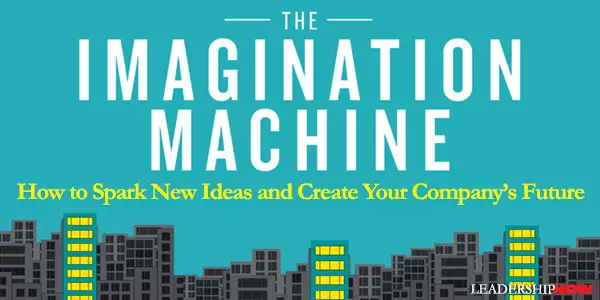 |
 |
07.09.21

The Imagination Machine
IMAGINATION is unique to humans and is key to creativity and innovation. In a time when elementary students today will be working in jobs that haven’t yet been created, imagination is the path forward. Imagination is the ability to picture that which doesn’t exist. In The Imagination Machine, authors Martin Reeves and Jack Fuller say that “For the sake of restoring the vitality of our companies, and for the societies these companies serve, we must better harness imagination.” “We spend much of our time in the realm of what is,” imagination is about what isn’t. Distinct from creativity and innovation, imagination extends beyond programs of innovation: “imagination is not just for inventing new products and services, but for fundamentally rethinking the mental model on which a company is based, even rethinking an entire industry or envisaging new industries.” The kind of imagination they are talking about is grounded in reality. “Imagination is not just random thoughts unhinged from reality. Rather, it rests on a causal understanding of reality. To the extent we understand the dynamics of the world—why things are the way they are—we can play with recombining and changing things in ways that still make sense and are feasible.” To get the ball rolling so we can begin nurturing and drawing from the imagination that exists inside all of us, they have presented a six-step process for creating ideas and bringing them to life. Step 1: The Seduction Imagination begins with a surprise. Surprise triggers imagination. It takes us “out of our routine way of looking at things into the realm of counterfactual thinking.” To increase the frequency of a productive surprise, the authors suggest we make the time for reflection, pay attention to our frustrations, seek the unfamiliar, reflect on unintended consequences and anomalies, draw analogies, and learn new ways of interpreting the world as it is. They say, “busy is the new stupid. It is precisely during the busy times that we should not forget to stare out the window.” Step 2: The Idea
Step 3: The Collision We need to act. Create a feedback loop from the mind to the world and back again. “A new mental model remains just an individual indulgence unless we act—to collide the idea with reality, spur our imagination again, and drive the evolution of the idea.” At this stage, we are looking for “a basic response from the world: Did the idea work—did the seed grow—or not?” At the same time, we want to look for surprise to evolve our idea. “In this mindset, instead of looking for a binary response from the world—did the idea work or not?—we are looking for the world to disrupt the way we think.” Step 4: The Epidemic Like a virus, an idea needs to spread from one person to many. One benefit of sharing it with others is we “accelerate its evolution by driving collective reimagination.” The key here is to be able to communicate the idea well so that everyone imagines the same thing. Step 5: The New Ordinary How do you execute and deliver the new idea? How do you make it the new ordinary? We do this by creating a clear script to guide others in a way that drives thought and action. The script should also be designed “so that it can evolve, to change in response to changing demands or opportunities.” Step 6: The Encore Amazon has been successful because they combine efficiency and imagination. Some companies invent something and live off that for decades leading to stasis and eventual decline. “To avoid this fate, your business must combine harvesting well-cultivated areas with exploring counterfactual landscapes.” The challenge is to do both. The core problem is that the imagining and executing mindsets don’t naturally fit together—in fact, they are often antagonistic. Emphasizing one has the potential to undermine the other. Tips for sustaining imagination in your organization include creating novel information flows and designing spaces for reflection while encouraging low-input time to explore the counterfactual.
The Imagination Machine is an exceptionally well-laid-out book. Each chapter begins with an outline, proceeds with the main point with an abundance of examples, a practical how-to section, and what keeps that from happening before finishing with games to play to build on and develop the qualities that spark ideas and imagination. For those who like visual reinforcement, they generously highlight their text with memorable graphics. 
Posted by Michael McKinney at 07:38 AM
|
BUILD YOUR KNOWLEDGE
 

How to Do Your Start-Up Right STRAIGHT TALK FOR START-UPS 
Grow Your Leadership Skills NEW AND UPCOMING LEADERSHIP BOOKS 
Leadership Minute BITE-SIZE CONCEPTS YOU CAN CHEW ON 
Classic Leadership Books BOOKS TO READ BEFORE YOU LEAD |